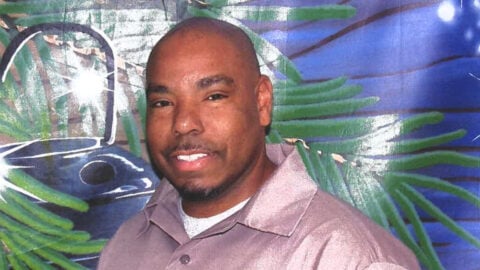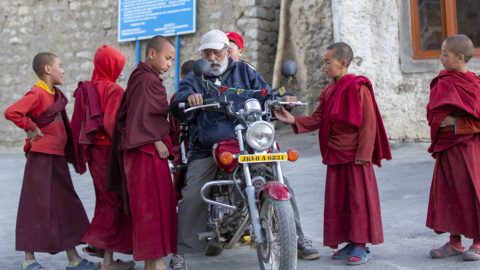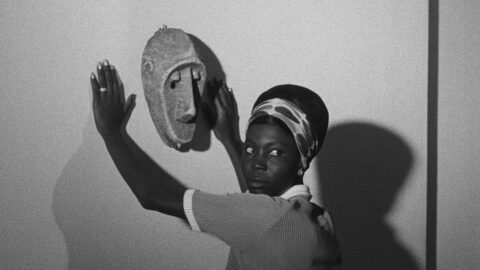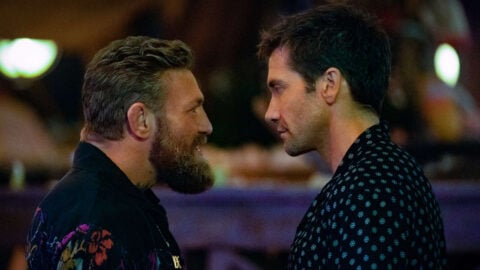Review: Legend
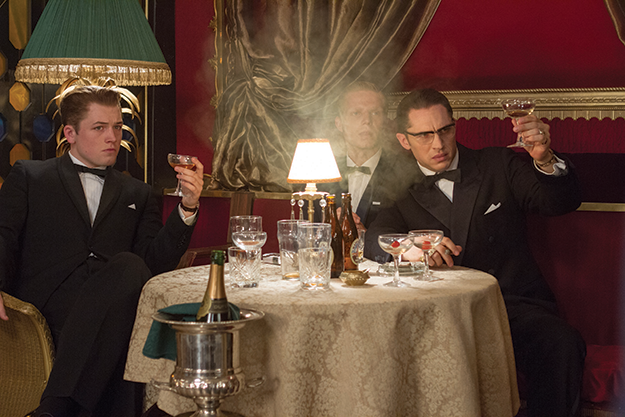
Legend may strike international viewers unfamiliar with the crimes of Ronald and Reginald Kray (each played by Tom Hardy) as a bland celebratory title for a film about the identical twins who so menacingly dominated London’s gangland in the Sixties that they were, in Ronnie’s words, “fucking untouchable” by the government or the police until they were convicted of separate murders in 1969 and given life sentences.
Since British pop culture still issues frequent updates on the twins’ reign of terror via memoirs, TV documentaries, and tabloid newspaper articles—relatives of Reggie’s wife Francis Shea, for example, have lambasted Brian Helgeland’s new film for presenting her as more vapid than she apparently was—the U.K. audience for this second Krays biopic will accept the meaning of the title as a given. Savvy manipulators of the collective psychic space between facts and myth, on Fleet Street or in their East End “manor,” the twins ruled as much through their stardom as through their capacity for violence; their rivals, the so-called “torture gang” led by the Richardson brothers (Paul Bettany and Martin McCreadie), glimpsed administering electric shocks to a victim during a kangaroo court in Legend, were arguably more vicious than the Krays but never attained their power.
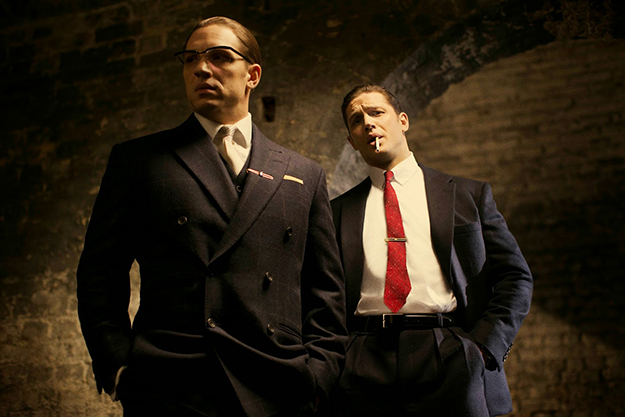
The Krays’ ambiguous allure for the British upper-class set was summed up in Vogue photographer David Bailey’s famous portrait of the pair for his 1964 Box of Pin-Ups. Taken from a slightly low angle, it features Ronnie as the massive glowering figure, smartly dressed in a black jacket, in the foreground with Reggie, wearing a lighter suit, peering over Ronnie’s right shoulder and making more direct eye contact with the spectator. The image, which influenced the film’s publicity materials, not only lends it a visual perspective, but functions as a metaphor for it. The paranoid schizophrenic Ronnie is the more intellectually and vocally sluggish twin whose ferocious outbursts—not least the point-blank shooting in the head of Richardson aide George Cornell (Shane Attwooll)—blot out Reggie’s efforts to bring some legitimacy to their entrepreneurial activities in the West End.
Reggie is initially the more reasonable man, whose gentlemanly romancing of the sweet, jittery Frances (Emily Browning) will initially make him a likeable character for some viewers, though Helgeland slowly and deftly shifts audience sympathies for each twin. Partially as a result of Ronnie’s killing Cornell and commissioning the bungling Jack “the Hat” McVitie (Sam Spruell) to murder the Krays’ supercilious financial adviser (David Thewlis), Reggie begins to crack. He visits his wrath on Frances as she tries to end their relationship. Once Frances has left Reggie, Ronnie, a homosexual who had feared she would emotionally alienate Reggie from him, softens toward her (though a sisterly kiss she gives him provokes his gynophobic disgust). It’s too late: it transpires that Frances’s voiceover narration (articulated with a breezy omniscience at odds with her neediness) is Legend’s equivalent of Joe Gillis’s narration in Sunset Boulevard.
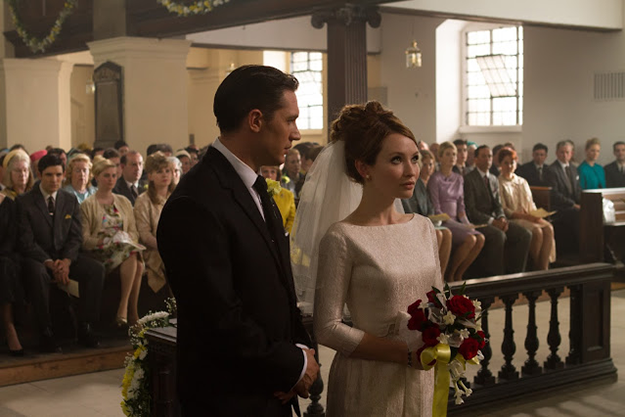
Cataloguing pivotal events in the Krays’ history, including Ronnie’s scandalous involvement as a procurer of boys for the Conservative politician Lord Boothby, Legend avoids the overt psychologizing of director Peter Medak and writer Philip Ridley’s The Krays (90), which largely attributed the pathological behavior of the twins (played by Spandau Ballet’s Gary and Martin Kemp) to their close relationship with their indulgent mother (Billie Whitelaw). Yet Helgeland insouciantly drops in clues to their sociopathic bond. Two questions Ronnie asks Reggie get revelatory answers: “What do you see in her?” he says of Frances when they are standing at the church altar before Reggie’s wedding. “Myself, if I wasn’t scared,” Reggie replies. Later on, after Reggie stabs McVitie to death at a Christmas party, Ronnie asks, “Why would you do that?” Reggie says, “Because I can’t kill you.” Reggie’s identification with Frances (less as a civilizing influence than as a well of passive femininity) and resisting of his fratricidal range hints at his repressed homosexuality, which came to light after his death at 66 in 2000 (five years after Ronnie’s). It has been mooted that, as teenagers growing up in a country where homosexuality was outlawed, they had committed incest. In the movie, Helgeland aligns Reggie’s rape of Frances, which possibly “consummated” their marriage, to his frenzied stabbing of McVitie. There’s a strong implication of a damaging sexual past in the Krays’ co-dependency, which links it to Helgeland’s adaptation of Mystic River.
His fifth and most assured film as both writer and director, Legend is not the work of a dedicated stylist, but of a strong storyteller who, like Lawrence Kasdan in the Eighties and Nineties, creates clean, precise images. Camera movements are unostentatious, angles more expressive of the Krays’ intimidating bulk and mannerisms. The main concession to style is DP Dick Pope’s casting of a tequila glow over the club scenes especially—an aura that cements the idea that the Krays were legends in their own lifetimes. Helgeland’s visual restraint creates room in the frame for Hardy’s feat of differentiating men who developed from the same zygote but lived out their lives in far-flung cells.



